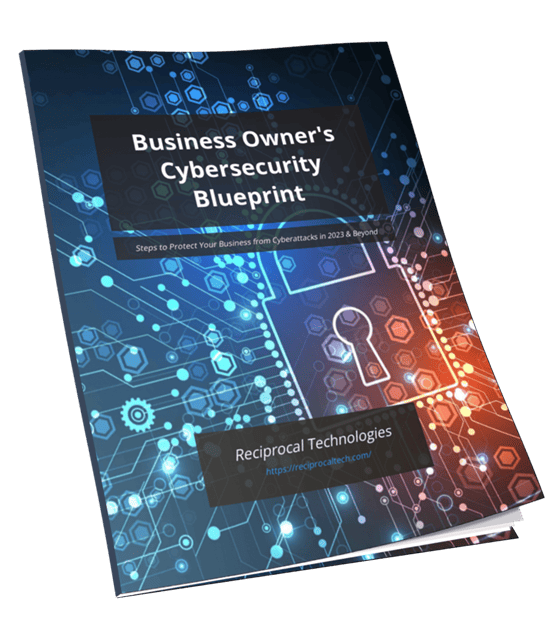Ensuring Indianapolis IT Compliance for PCI DSS

PCI DSS compliance is more than just a legal requirement; it’s vital for maintaining business integrity and earning customer trust. Companies that deal with cardholder information must make compliance a top priority to protect sensitive data from growing cyber threats.
Here’s why PCI DSS (Payment Card Industry Data Security Standard) compliance is so important:
- Data Protection: It ensures strong measures are in place to keep cardholder data safe from breaches and unauthorized access.
- Customer Trust: It shows your commitment to security, which boosts customer confidence and loyalty.
- Financial Safeguards: It helps reduce the risk of expensive data breaches and potential legal penalties for not complying.
As more consumers turn to online payments, secure transactions become crucial. With the increasing reliance on digital platforms, organizations benefit from working with a managed service provider in Indianapolis to ensure strict security measures are in place to safeguard cardholder data.
For businesses operating in this complex environment, understanding the significance of PCI DSS compliance is key. It enables them to maintain secure transactions and promote a culture of Indianapolis cybersecurity awareness. By taking proactive steps to meet these standards, organizations can ensure smooth operations and keep their customers satisfied in this digital era.
Understanding PCI DSS Compliance Requirements
The Payment Card Industry Data Security Standard (PCI DSS) is a critical framework designed to enhance the security of cardholder data. Established by major credit card companies such as Visa and MasterCard, PCI DSS aims to protect sensitive information during electronic transactions. Adhering to these standards is vital for any organization that processes, stores, or transmits cardholder data.
Compliance with PCI DSS involves meeting specific requirements and control objectives:
12 Key Requirements:
- Install and maintain a firewall configuration to protect cardholder data.
- Do not use vendor-supplied defaults for system passwords and other security parameters.
- Protect stored cardholder data.
- Encrypt transmission of cardholder data across open and public networks.
- Use and regularly update anti-virus software or programs.
- Develop and maintain secure systems and applications.
- Restrict access to cardholder data on a need-to-know basis.
- Identify and authenticate access to system components.
- Restrict physical access to cardholder data.
- Track and monitor all access to network resources and cardholder data.
- Regularly test security systems and processes.
- Maintain an information security policy.
6 Control Objectives:
- Build and maintain a secure network
- Protect cardholder data
- Maintain a vulnerability management program
- Implement strong access control measures
- Regularly monitor and test networks
- Maintain an information security policy
Compliance with these requirements ensures robust protection measures are in place, mitigating risks associated with processing sensitive payment information.
Consequences of Non-Compliance with PCI DSS Standards
Not following PCI DSS standards can have serious consequences for businesses. The risk of data breaches significantly increases, allowing unauthorized individuals to access sensitive cardholder information. This breach can lead to severe financial penalties, including large fines imposed by regulatory bodies and payment card networks.
Impacts of non-compliance include:
- Financial Losses: In addition to fines, businesses may incur costs related to fixing the issues, legal expenses, and higher insurance premiums.
- Customer Trust Erosion: A data breach can greatly harm customer confidence. When consumers perceive a lack of security, they are less likely to engage with or recommend a business.
- Reputation Damage: Negative publicity following a breach can damage a company’s image, resulting in long-term consequences that affect both customer retention and acquisition.
The effects go beyond immediate financial consequences. Companies risk losing their competitive advantage as consumer trust decreases. Implementing strong compliance measures not only reduces these risks but also creates a secure environment for transactions, ultimately boosting brand loyalty in an increasingly digital marketplace.
IT Strategies for Achieving PCI DSS Compliance
1. Conducting a Thorough Assessment with a Qualified Security Assessor
Achieving PCI DSS compliance requires careful planning and execution. Engaging a Qualified Security Assessor (QSA) is a strategic move that can significantly enhance the effectiveness of your compliance efforts. A QSA has the expertise and experience necessary to evaluate your organization’s security posture against PCI DSS standards.
Benefits of Engaging a QSA:
- Expert Guidance: QSAs offer specialized knowledge in navigating the complexities of PCI DSS requirements. Their insights can help identify gaps in your current practices, enabling timely remediation.
- Tailored Strategies: Each organization has unique needs. A QSA can develop customized strategies that align with your specific business operations and risk profile.
- Enhanced Credibility: Utilizing a QSA lends credibility to your compliance efforts, reassuring stakeholders and customers that you are serious about securing cardholder data.
Engaging a QSA is not merely an optional step; it is essential for ensuring robust compliance and security measures.
Steps to Prepare for an Effective Assessment
Preparation is crucial when working with a QSA. The following steps can streamline the assessment process:
- Inventory Data and Systems: Compile a comprehensive list of all systems, applications, and data stores that handle cardholder information. This inventory will form the foundation for your assessment.
- Define Scope: Clearly outline which systems fall within the scope of PCI DSS compliance. Avoid including irrelevant systems to minimize complexity during the assessment.
- Document Security Policies: Organize existing security policies related to data protection, access control, and incident response. A thorough review of these documents will provide the QSA with insight into your organization’s current practices.
- Conduct Internal Vulnerability Scans: Perform preliminary vulnerability scans for known weaknesses in your systems. Address any high-risk vulnerabilities before the QSA’s visit to demonstrate proactive risk management.
- Train Staff on Compliance Expectations: Ensure staff members understand their roles in maintaining compliance standards. Employee training programs should emphasize the importance of safeguarding cardholder data.
- Review Past Assessments and Remediation Efforts: If applicable, analyze results from previous assessments or audits and document actions taken to remediate identified issues.
These preparatory steps create an environment conducive to a successful assessment, facilitating clear communication between your organization and the QSA.
2. Implementing Advanced Security Technologies such as Machine Learning for Threat Detection and Response
Adopting advanced security technologies is essential. One such technology, machine learning, plays a crucial role in improving threat detection and response. By using machine learning algorithms, organizations can analyze large amounts of data to find patterns that indicate potential security threats.
Key advantages include:
- Proactive Threat Detection: Machine learning systems adapt and learn from new threats, allowing for real-time identification and mitigation.
- Automated Responses: These technologies can automate responses to detected threats, significantly reducing the time taken to address vulnerabilities.
Collaboration with cybersecurity firms further strengthens protection measures. Partnerships can provide organizations with access to advanced tools and expertise necessary for strong security frameworks. This collaboration enables businesses to implement:
- Comprehensive threat intelligence
- Continuous monitoring systems
- Tailored solutions aligned with specific risk profiles
Employee training programs are critical in maintaining compliance standards alongside the deployment of these advanced technologies. Staff must understand how to effectively utilize new systems and stay vigilant against evolving threats.
Strategies for achieving PCI DSS compliance include:
- Conducting a Thorough Assessment with a Qualified Security Assessor
- Implementing Advanced Security Technologies such as Machine Learning for Threat Detection and Response
- Automating Compliance Management Processes with Automated Compliance Management Tools
These approaches collectively strengthen an organization’s cybersecurity posture, ensuring compliance while protecting sensitive cardholder data.
3. Automating Compliance Management Processes with Automated Compliance Management Tools
Automated compliance management tools are crucial in simplifying the complexities of meeting PCI DSS standards. These tools improve operational efficiency by making compliance processes easier through:
- Centralized Data Management: Automated systems gather all compliance-related data in one place, making it easy to access for audits and assessments.
- Regular Updates: These tools ensure that compliance measures are always up to date with the latest PCI DSS requirements.
- Real-Time Alerts: Instant notifications about compliance status or potential breaches allow for quick responses to security threats.
- Audit Trails: Detailed records of all compliance activities provide transparency and accountability, which are essential for both internal reviews and external audits.
Using advanced security technologies like AI threat detection alongside these automated processes further strengthens security measures. Employee training programs to maintain compliance standards are also important, ensuring that staff stay informed about the latest protocols and practices.
Best Practices for Protecting Cardholder Data Beyond Compliance
Employee Training and Awareness Programs on Cardholder Data Protection and Compliance Expectations
Ensuring the protection of cardholder data goes beyond merely meeting PCI DSS compliance standards. A robust strategy hinges on fostering a culture of cybersecurity awareness among employees. Establishing effective employee training programs is crucial in this regard.
Developing Training Programs Focused on Cardholder Data Protection
Training programs should be tailored to address specific aspects of cardholder data protection. Key components include:
- Understanding PCI DSS Requirements: Employees must comprehend the significance of PCI DSS standards and their role in safeguarding sensitive information.
- Data Access Restrictions: Implement strict guidelines that limit access to cardholder data based on the principle of least privilege. Only those who require access to their job functions should have it. This minimizes potential exposure and reduces risks.
- Unique Identification Access: Assign unique IDs for each employee accessing sensitive data. This practice enables better tracking of actions taken with cardholder information, facilitating accountability and quick response in case of breaches.
- Incident Response Procedures: Educate employees on how to respond to security incidents effectively. This includes reporting suspicious activities promptly and understanding the steps to take during a breach.
Reinforcing the Importance of Cybersecurity Awareness Among Staff
Creating a culture of cybersecurity awareness requires ongoing reinforcement of training efforts. Consider implementing the following strategies:
- Regular Refresher Courses: Schedule periodic training sessions to keep employees updated on evolving threats and compliance requirements. Continuous education fosters vigilance.
- Simulated Phishing Attacks: Conduct regular simulations to test employee responses to phishing attempts. These exercises highlight vulnerabilities and help staff recognize potential threats.
- Feedback Mechanisms: Establish channels for employees to report concerns or suggest improvements regarding data protection practices. Engaging staff in discussions about cybersecurity encourages a proactive approach.
- Recognition Programs: Acknowledge employees who demonstrate exemplary adherence to cybersecurity protocols. Recognition incentivizes commitment to data protection practices.
An organization’s defense against potential breaches is only as strong as its weakest link—its employees. By investing in comprehensive training programs focused on cardholder data protection, businesses not only enhance compliance but also cultivate a workforce that is vigilant and informed about cybersecurity risks.
Enhancing employee knowledge contributes significantly to an organization’s overall security posture, establishing a foundation that supports sustained adherence to PCI DSS standards while mitigating risks associated with data breaches.
Regular Vulnerability Scanning and Penetration Testing (VAPT) to Identify Weaknesses in Security Controls
Regular vulnerability scanning and penetration testing (VAPT) are crucial components of a robust cybersecurity strategy. They serve as proactive measures to identify and rectify weaknesses in security controls before they can be exploited.
Necessity of Regular VAPT
Conducting these assessments helps organizations uncover vulnerabilities that could potentially lead to unauthorized access or data breaches. The focus should be on:
- Implementing strict access controls based on need-to-know principles.
- Establishing data access restrictions to limit exposure.
Utilizing Results for Enhanced Security
The insights gained from VAPT enable organizations to strengthen their overall security posture. Key actions include:
- Addressing identified vulnerabilities promptly.
- Ensuring unique identification access for employees, minimizing the risk associated with shared credentials.
- Reinforcing employee training programs focused on cybersecurity awareness, emphasizing the importance of proper access management.
Importance of Documentation
Documenting access logs and physical security measures is essential for compliance with PCI DSS standards. Regularly reviewing these logs aids in detecting suspicious activities and ensuring accountability.
Incorporating VAPT into the compliance framework not only mitigates risks but also fosters a culture of vigilance within the organization regarding cardholder data protection.
Tools for Maintaining Ongoing PCI DSS Compliance Over Time
Maintaining PCI DSS compliance requires a structured approach and the right tools. The following tools can greatly assist organizations in managing ongoing compliance:
1. Approved Scanning Vendors (ASVs)
- Conduct regular vulnerability scans to identify and address potential security flaws.
- Ensure that scans are performed quarterly, as per PCI DSS requirements.
2. Documentation Software
- Facilitate the organization and management of all compliance-related documents.
- Enable easy access to policies, procedures, and evidence of compliance measures.
3. Compliance Management Platforms
- Provide integrated solutions that track compliance status across various controls.
- Automate reporting processes, making it simpler to generate required documentation for audits.
4. Continuous Monitoring Tools
- Implement real-time monitoring for network vulnerabilities and unauthorized access attempts.
- Assist in maintaining vigilance against emerging threats that could compromise cardholder data.
Utilizing these tools streamlines the process of achieving and maintaining PCI DSS compliance. Regular updates and audits with these technologies help organizations stay ahead of threats while reinforcing their commitment to securing sensitive payment information. Adopting a comprehensive toolset provides businesses with confidence in their compliance efforts and strengthens their security posture.
Take a Comprehensive Approach to Ensure Long-Term PCI DSS Compliance
Maintaining PCI DSS compliance requires a proactive and holistic strategy. Key elements include:
- Continuous Monitoring: Regularly assess systems for vulnerabilities and compliance gaps.
- Documentation: Keep thorough records of all compliance activities, changes, and training sessions.
- Regular Training: Implement ongoing employee training programs to reinforce the importance of data protection.
- Third-Party Management: Regularly evaluate and ensure that third-party vendors comply with PCI DSS standards.
A dedicated team should oversee compliance efforts, adapting strategies as regulations. This comprehensive approach not only protects sensitive data but also builds trust with customers.
FAQs
What is PCI DSS compliance and why is it important for businesses?
PCI DSS compliance refers to the Payment Card Industry Data Security Standard, which outlines security measures for protecting cardholder data. It’s crucial for businesses to ensure secure transactions in the digital age, as non-compliance can lead to data breaches, financial penalties, and a loss of customer trust.
What are the key requirements of PCI DSS?
The PCI DSS consists of 12 requirements categorized into 6 control objectives. These requirements are designed to enhance security measures around cardholder data, including maintaining a secure network, implementing strong access control measures, monitoring and testing networks, and regularly maintaining information security policies.
What are the consequences of failing to comply with PCI DSS standards?
Non-compliance with PCI DSS standards can result in severe consequences such as data breaches that compromise cardholder information, compliance fines and penalties imposed by payment processors or banks, and significant damage to customer trust and business reputation.
What IT strategies can businesses implement to achieve PCI DSS compliance in 2025?
Businesses can adopt several IT strategies to achieve PCI DSS compliance, including conducting thorough assessments with a Qualified Security Assessor (QSA), implementing advanced security technologies like AI for threat detection, automating compliance management processes, and providing employee training programs focused on maintaining compliance standards.
How do employee training programs contribute to PCI DSS compliance?
Employee training programs play a vital role in PCI DSS compliance by educating staff on cardholder data protection practices and reinforcing cybersecurity awareness. This ensures that employees understand their responsibilities regarding data security and helps mitigate risks associated with human error.
What tools are available for maintaining ongoing PCI DSS compliance?
There are various tools available for ongoing Indianapolis IT compliance management, including Approved Scanning Vendor (ASV) scanning tools and documentation software. These tools assist organizations in continuously monitoring their adherence to PCI DSS standards and facilitate regular vulnerability assessments.
About the Author
Author’s recent posts
Download the
Business Owner’s Cybersecurity Blueprint


